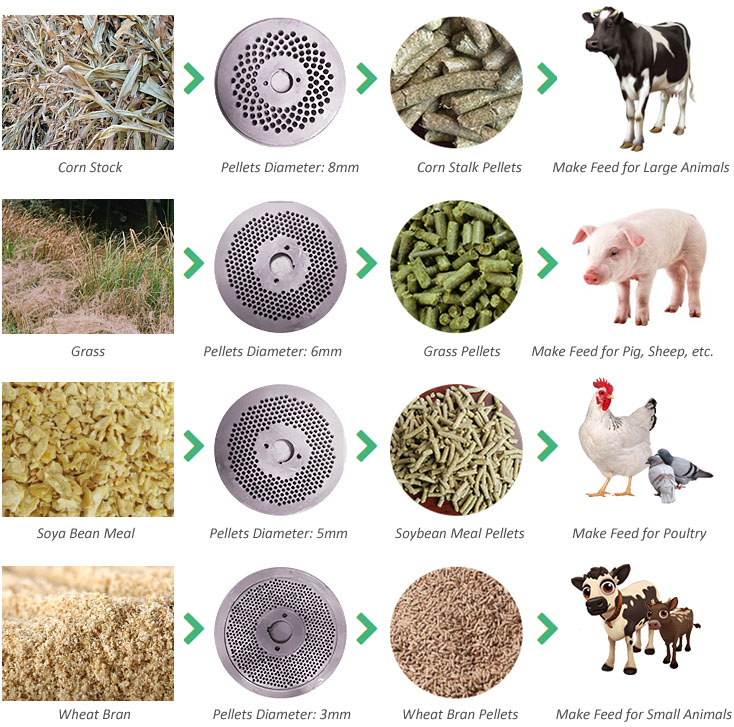feed mixer
Nov . 02, 2024 15:56 Back to list
feed mixer
Understanding Feed Mixers Essential Equipment for Livestock Nutrition
Feed mixers are critical components in the livestock industry, facilitating the creation of balanced diets for various animals. As farming practices evolve, the need for precise nutrition has become paramount. Feed mixers play a vital role in ensuring that feed ingredients are uniformly mixed, creating a consistent product that meets the dietary requirements of livestock. In this article, we will explore the significance of feed mixers, their types, and the factors to consider when selecting one.
The Importance of Feed Mixers
In livestock management, providing a balanced diet is essential for the health and productivity of animals. Nutritional imbalances can lead to a range of health issues, reduced growth rates, and decreased milk or meat production. Feed mixers address these challenges by combining different feed ingredients—such as grains, vitamins, minerals, and additives—into a homogenous mixture. This ensures that every bite an animal takes is nutritionally sound, promoting better health and growth.
Moreover, feed mixers help in optimizing feed efficiency. Well-mixed feed can reduce waste and improve feed utilization, which is crucial for sustainable farming practices. Farmers can save money and resources by minimizing feed losses and ensuring that livestock receives the nutrients necessary for optimal performance.
Types of Feed Mixers
There are various types of feed mixers, each suited for different applications and scales of operation. The most common types include
1. Vertical Mixers These mixers are designed to vertically rotate, allowing for thorough mixing of dry and wet ingredients. They are ideal for farms with moderate to large-scale operations.
2. Horizontal Mixers With a horizontal auger, these mixers blend ingredients effectively in a shorter time. They are suitable for producing larger quantities of feed and can handle a variety of feed types.
3. Batch Mixers Typically found on smaller farms, batch mixers produce a set quantity of feed at a time. They are perfect for small-scale operations or specialized feed mixes.
feed mixer

4. Continuous Mixers Designed for large feed mills, continuous mixers maintain a steady feed flow, ensuring consistent mixing and output.
Choosing the right type of mixer depends on factors such as the scale of the operation, the types of feed ingredients used, and the specific nutritional needs of the livestock.
Considerations When Choosing a Feed Mixer
When selecting a feed mixer, several factors should be taken into account
- Capacity Determine the volume of feed required regularly. The capacity of the mixer should align with the farm's needs to prevent delays in feeding.
- Type of Ingredients Consider the types of feed ingredients used. If mixing both wet and dry feeds, ensure the mixer is designed to handle such variations.
- Durability and Maintenance Invest in a mixer built from high-quality materials to withstand daily use. Regular maintenance is crucial for longevity and efficiency.
- Ease of Use Look for mixers with user-friendly controls and features that facilitate loading, mixing, and unloading.
In conclusion, feed mixers are indispensable tools in livestock farming, playing a significant role in ensuring animals receive optimal nutrition. By understanding the different types of mixers available and considering specific needs, farmers can make informed decisions that enhance their operation’s efficiency and productivity. Investing in a quality feed mixer not only supports the health of livestock but also contributes to a sustainable agricultural future.
-
Hot Sale 24 & 18 Door Rabbit Cages - Premium Breeding Solutions
NewsJul.25,2025
-
Automatic Feeding Line System Pan Feeder Nipple Drinker - Anping County Yize Metal Products Co., Ltd.
NewsJul.21,2025
-
Automatic Feeding Line System Pan Feeder Nipple Drinker - Anping County Yize Metal Products Co., Ltd.
NewsJul.21,2025
-
Automatic Feeding Line System - Anping Yize | Precision & Nipple
NewsJul.21,2025
-
Automatic Feeding Line System - Anping Yize | Precision & Nipple
NewsJul.21,2025
-
Automatic Feeding Line System-Anping County Yize Metal Products Co., Ltd.|Efficient Feed Distribution&Customized Animal Farming Solutions
NewsJul.21,2025






